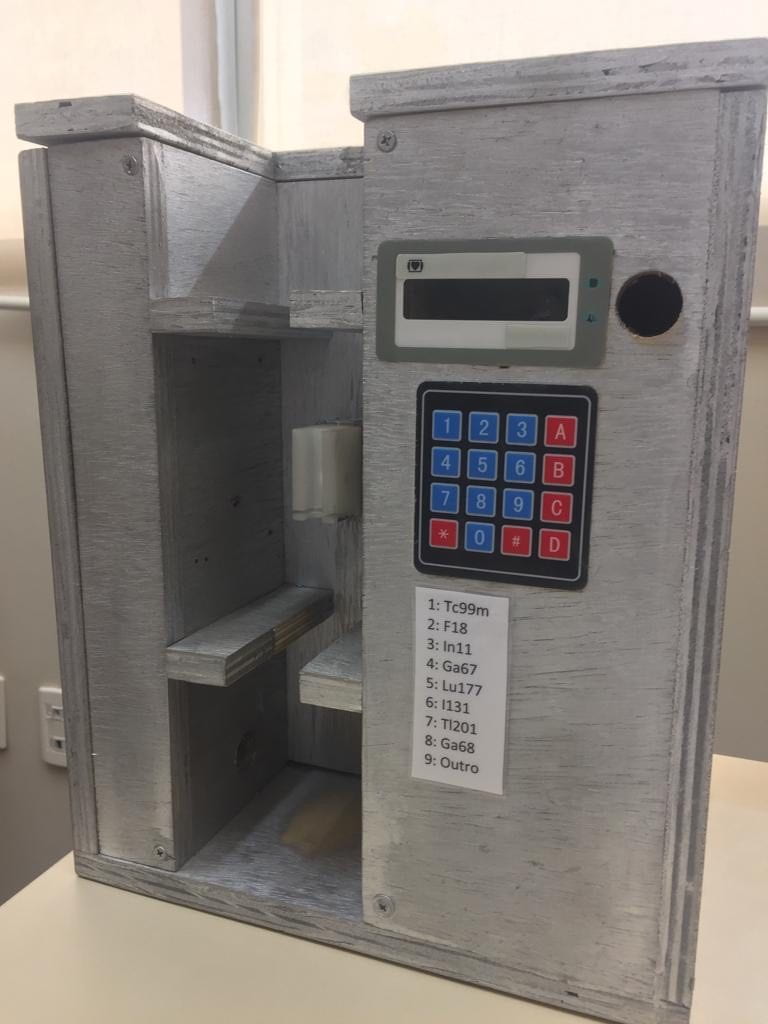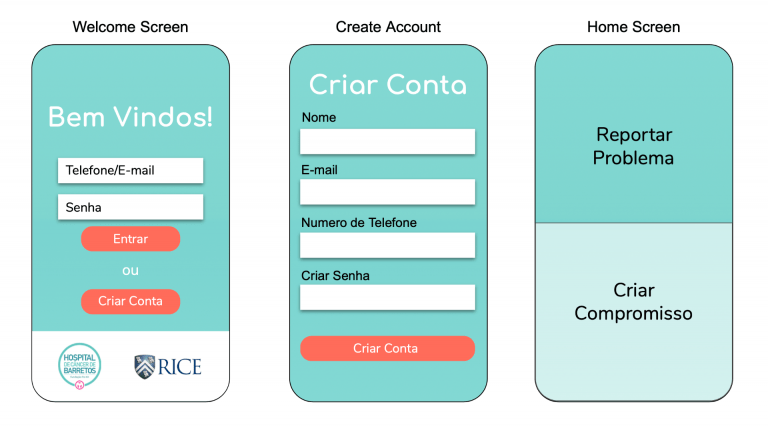Olá!
My fourth week has come to a close and it is crazy to me to think that I am officially halfway through my time here in Brazil. This past week Paula and I were able to tour the Nuclear Medicine and Prosthetics departments to perform some need finding. We also determined what our personal project will be, and therefore what we will focus the majority of our remaining time on, here in Barretos.
When first heading to the Nuclear Medicine department at the beginning of the week I wasn’t exactly sure what to expect. I did know that we would see doctors and nurses with radioactive materials, but I was ignorant as to how these materials were going to be used and to what degree. Once in the department, though I found the machines and procedures to be very interesting. The Nuclear Medicine department at Hospital de Amor focuses on two main areas, visualization through the injection of radioactive materials into the bloodstream and the treatment of patients through radioactive waves. In each of these two procedures, there are device needs. We were also able to find needs in the Prosthetics department. I was particularly interested to return to learn more about the processes that go into making a prosthetic. Taking into account though that describing all of these ideas may make this blog post too long I will only go in depth on one of the potential projects that I believe Paula and I may have the chance to look at while here in Barretos.
A device is needed to better facilitate the process for radioactive visualization. When using nuclear medicine for visualization purposes a patient is injected with radioactive material. What radioactive material is used and the dosage is determined based on where the radioactivity needs to attach within the body and what cancer the patient has. As such, each injection is patient-specific based on their needs. To account for this uniqueness in dosage, designated nurses will measure out the specific dosage of the needed radioactive material for each patient. Once injected each patient will be placed within differing visualization devices (CT, MRI, etc.) to have their cancer analyzed. Though one dose is low in radioactive material, the nurses who prepare the syringes of material have prolonged exposure. This exposure presents the nurses to a variety of risks. Therefore the department is looking for a means by which to pull specific dosage levels of specific radioactive materials while at the same time limiting the exposure the nurses experience. This is an important need and previous Brazil intern, Whitney Gartenberg, made a device to solve this problem. We received feedback while touring the department though that a stronger motor is required to adequately extract the radioactive materials from their containers without nurse intervention. Paula and I will further look into the device to determine if the motor was the only problem or if other components may need fortification. We will also see if additions or device modifications could be made to improve upon the initial prototype made by Whitney.

These are the current conditions under which nurses will create dosages of the radioactive material. Most of the containers pictured here are made of lead to mitigate the exposure to radioactivity.

This is the device which was made by Whitney last summer to create dosages with minimal nurse interaction. The motor is not pictured here.
In addition to touring new departments, Paula and I were able to meet with Dr. Luis Romagnolo about his recommended adjustments we make to Project ACE. We also took the chance to show him a complete Cervix Squad model. Dr. Luis was very happy with our adjusted ACE model inserts. We converted the model inserts to represent hemorrhoids rather than anal cancer. Dr. Luis told us the shape was accurate and easy to visualize through the model. Because of this, we will be meeting with other doctors in Hospital de Amor to show the ACE model and get a better idea of how this product can integrate into the greater hospital environment. We expect that ACE will primarily be used for education and testing purposes for those doctors and nurses who are studying or training in the hospital. Dr. Luis was also very excited about Cervix Squad. He told us that the model had a very similar texture when compared to a real cervix and was extremely interested in the color changing properties of the silicone. Due to the low cost, reusability, and accuracy of the model, we will also be presenting this product to further hospital staff this week. We expect that Cervix Squad will be used in a similar fashion to Project ACE. One recommendation which Paula and I will be looking into implementing will be the creation of a silicone insert for ACE. Dr. Luis found the silicone used in the Cervix Squad model to be very tissue-like and would like to see if a Project ACE insert could be made of the same silicone. He hopes this silicone can mimic the texture of the anal canal. Thus, Paula and I will be creating 3D schematics of the hemorrhoid ring inserts to 3D print molds which can then create a silicone version of the hemorrhoid insert. This insert will ideally be one piece so that no stitching or construction is required after the silicone is poured.
Though Paula and I have been mainly been working on projects we brought from Rice thus far this past week we decided what personal project we would like to complete in our last four weeks. We made the decision to work on a joint personal project so that we may tackle a need of greater magnitude. We have chosen to work with Dr. Deny Trevisani, a dentist in the palliative care unit. We are looking to create an application in which patients will be able to share images and descriptions of mouth pain they are feeling with Dr. Deny. He will then be able to evaluate these images and descriptions to either tell a patient to make an appointment at the hospital or if they can be treated with home remedies, he can relay back to them what needs to be done for the alleviation of symptoms. This is important as many patients live far from the hospital and those who do often fear the worst when they experience mouth pain after receiving treatment for cancer. Often times though it is unnecessary for these patients to come to the hospital as they are not experiencing pain due to metastatic mouth cancer. Currently, the hospital appointment schedule is backed up as they are looking at patients who have mouth pain, yet they do not have mouth cancer and thus can usually self treat at home. It is through the advent of this app that we hope to alleviate the back up in treatment that the hospital is experiencing with respect to mouth cancer appointments while at the same time looking to provide greater access to treatment prescriptions (whether home or hospital) for patients. Paula and I are by no means coding experts and therefore have been doing extensive research into the process for creating an app. We have made initial schematics of how we would like our app to look and we intend to begin coding this week.

Pictured are some initial designs for the application Paula and I are looking to create in the next few weeks.
I am super excited to begin the coding process for the mouth diagnosis application. I am also looking forward to presenting Project ACE and Cervix Squad to more hospital staff to receive greater feedback.
This week I do not have a new explicit sunset/sunrise photo to share. Instead, you can find a photo of Paula, Mathew (a Rice GMI student also working in Barretos), and I with a mule as the sun sets in the background. We had the chance to go to a mule rodeo this weekend in the Barretos town center.
Until next week! Até logo!

